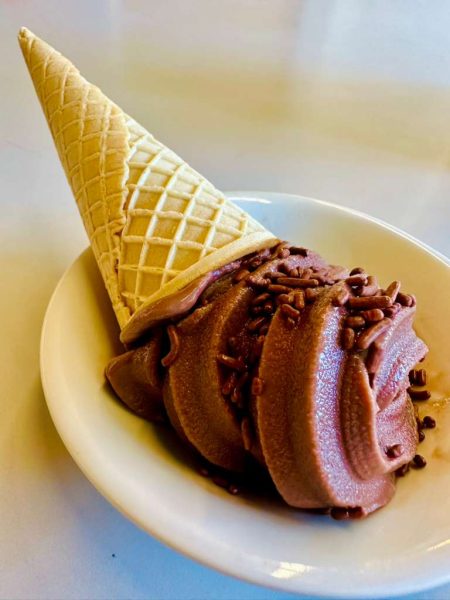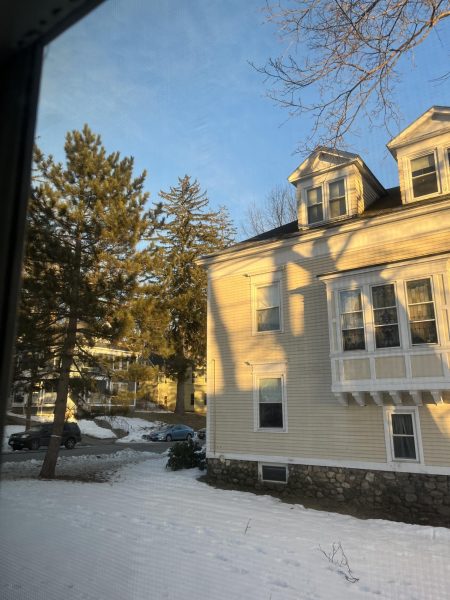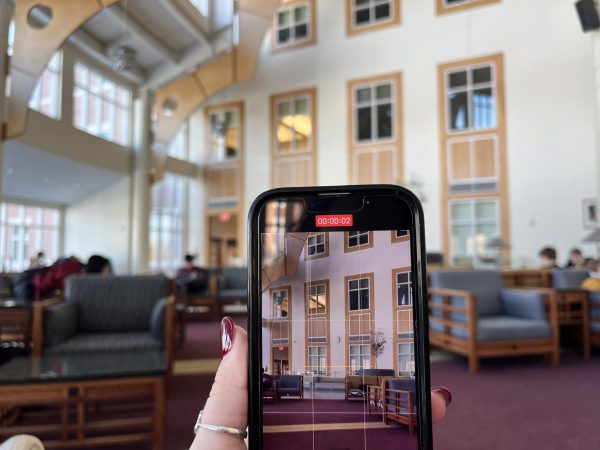Dancing Around White Supremacy
“Their core and foundations for the teachings of modern dance are based upon Eurocentric history instead of including and having the inclusion of African dance within modern dance”
“I never felt like I belonged”
“ I am not equipped enough to comment on a body on stage that looks like yours”
“You need to tone it down”
“She basically called me fat”
“There’s been some good times, but that’s only when I am dancing”
These are just a few of the statements from students who are women of color, students who have thicker bodies, and students who are first years who’ve had interactions with the Bates Dance Department. In this article, I will be discussing some of the problematic issues I’ve witnessed the Bates Dance Department perpetuating: cliques, the white gaze, and the lack of protection for black women. It’s also important to note that I will be referring to the Bates Dance Department and not the Bates Theater because I am not a theater major and all of these interactions that I will be revealing are exclusively from the dance space. The goal of this article is to shed light on personal anecdotes and to provide solutions for the future of dance at Bates. Now, let me provide you all with two starting points.
First, I am currently a senior who is studying dance and psychology as a double major. I am of Nigerian and Jamaican descent, and my dance background is Hip-Hop, Liturgical, West African, and Dancehall. When I came to Bates College, I was introduced to modern dance and improvisation. The modern dance that I was shown was mundane to me so I decided that I would create my own movement material that infused modern dance and my personal cultural dance forms. I have created pieces that reflect this very fusion. Second, if you have any connection to the Bates Dance Department and you are offended by this article, you may want to consider your positionality within the department. This is my truth and the truth of many other students and alum.
The Cliques, Othering, & Favoritism
As I enter the dance studio for, let’s say, a modern dance technique class, the atmosphere is not as competitive compared to other dance departments at other institutions, it is place where people are truly invested in learning how to be safe and effective movers.
I notice that there are two distinct groups. One group has white women who are quite frankly, the “face” of the department. Then you have the second group which I would say I am a part of. This group consists of white students who do not feel as though they belong in the first group and students of color. Now, this is no different than what we see in social settings outside of the dance studio but the dance space can be more stigmatizing and isolating because of the proximity. What is even more troubling is that professors are aware of these groups and do absolutely nothing to disrupt them. Instead, they emphasize it more by allowing the same dancers to work together in groups and be assigned to take care of production items. Furthermore, the approach that the department uses when interacting with black women that is completely different than the department’s approach when dealing with white women which you will see as I continue. As a result, favoritism and racist undertones arise.
The White Gaze + European Beauty Standards
Favoritism is shown through the marketing materials that the production team comes up with. Ask yourself, who is usually on the posters when there is a dance event approaching? There is an unspoken preference for white bodies that are more slim, and if I’m wrong then it’s time for that to be reflected in the marketing materials, and I’m not talking about using a black student from several years ago. To continue, in western dance forms such as ballet there is a standard that dancers must be a certain body type. You would think that at a liberal arts college we would not fall into these expectations. However, there have been students who have expressed that their body shapes have been commented on in the most negative ways. Imagine being in a room where your body is under the white gaze that values Eurocentric standards of beauty. It’s overwhelming. No student should ever leave a dance space feeling as though their body isn’t beautiful. I also want to add in here that there are so many black students who dance on this campus, and when they don’t see themselves represented of course they don’t want to attend a concert let alone attend a dance class unless they desperately need it for the PE requirement.
Lack of Protection for Black Women
My sophomore year, I took a class called Dance Composition. In this class, the main assignment was to create a choreographic piece that has more than one person in it, and that cannot include yourself. This was the first piece that I ever made in college! I was super excited because I knew this was going to be a piece that was going to incorporate the dance forms from my Jamaican and Nigerian culture which is lacking in the department. As the semester goes on, it was time to show the department what we all have been working on in order to give us fruitful feedback. The department invited a guest artist who is a Bates alum. The professors along with her were adjudicating the dance pieces. When it was my time to show my piece, I was excited! However, once my piece was shown, the guest artist made an insensitive comment. She said “I don’t really understand what your piece is about, like I am kind of confused, like what’s the point of having Bob Marley speak?”(which is really rich coming from her if you’ve seen her work). But I digress. She was referring to a part where one of my dancers had a spotlight on her in the center of the stage, and they were moving fluidly around space while Bob Marley talks about the importance of life and happiness. My piece was about celebrating black women and their bodies through the dance forms of West African dance, Soca, and modern dance. I am not surprised that she did not understand. She is a white woman who centers her work on white women narratives. Nevertheless, I did not appreciate her comment because her delivery was nasty. I stormed out of the theater and one of my dancers who is now an alum consoled me and I told her what was said. She understood what I was going through because she said “She said something insensitive to me as well a few years back”. My dancer who was a senior at the time went with me to the professor and we both told her about how we felt. And do you think I was taken seriously? Nope. The professor essentially told me to have thick skin and to tolerate it. Black women are usually always told to toughen up. At that moment I did not want to, my feelings were hurt as a younger student. I was not protected at all. They completely disregarded my feelings because in their minds, I was not capable of feeling any emotion or pain.
Similarly, last year the guest artist, who the department loves so much, came to conduct a residency where he created a work that the dancers in the repertory class would perform for a particular concert. As a dancer, you are graded for your participation and effort with the guest artist. According to my professors, I am a resilient and hardworking student, so collaborating with others is usually never an issue for me. I treat every guest artist with respect and give my all in order to help their vision become a reality. The guest artist’s piece was something I would never do again in my life because it is not my style of dance. His piece was saturated with abstract content and I was not captivated by his work. However, I came to class on time every day, ready to work. Anything that I was asked to do, even when I felt uncomfortable I did it because I knew this was a team effort. The grade I got for working with him was one that I did not agree with and I spoke my mind. Once I did that, I received backlash from the professors telling me that I did not put ANY effort into his piece and he thought so too. Interestingly enough, while we would be in rehearsals all his attention would be towards the white dancers, and I, as the only black woman, I definitely felt that energy. So was it really me who wasn’t putting in enough effort, or the guest artist who simply forgot I existed? We can agree to disagree, but what my issue was at the time was the fact that my professors did not believe me. They’ve known me longer than they knew him, and automatically that went out the window. Again, I did not feel protected. If this happened to some of the favorites of the department, the conversation would have been completely different.
A Few Actionable Items
These are just a few experiences of mine and of others but I do want to save your last moments reading this article to some solutions that could help.
- Change the dynamics up in class (switch the groups up or simply call out the fact that there is clearly a divide).
- Change the marketing materials, representation matters.
- When approached by a student, listen to understand not to respond.
- Don’t comment on someone’s body whether it is positive or negative (focus on the dancing)
- Believe black women.
Being a black dance major in an atmosphere filled with white dancers, race will always be salient for me. Being colorblind in dance spaces is invalidating my black dancing body. When you invalidate it, you are contributing to white supremacist ideologies.
Your donation will support the student journalists of Bates College and help us cover our annual website hosting costs.






